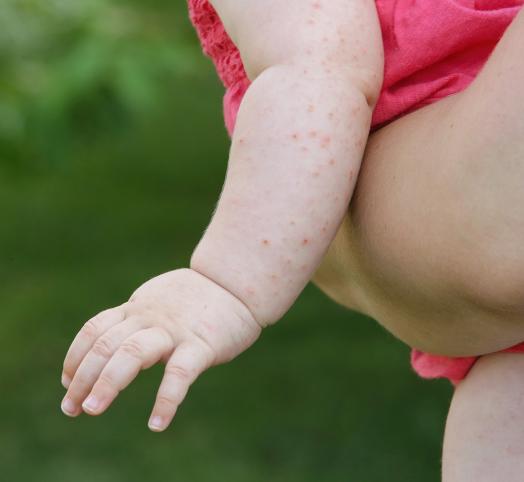Eczema: how to spot and prevent it?
Updated on March 2, 2023
Created on July 17, 2019
AU & NZ - Find your nearest pharmacy here
Updated on March 2, 2023
Created on July 17, 2019

Signs of atopic dermatitis
“Atopic dermatitis", also called "eczema" is a skin barrier disorder that affects 1 in 3 children1. It appears as extremely dry skin on the body and face and alternates between eczema flare-ups with red patches and periods of relief. Eczema can appear from the age of two months. It decreases severity over time and often disappears spontaneously, usually around the age of five or six. Meanwhile, eczema will disrupt your baby’s day-to-day life, because it often translates to itching and discomfort.
Eczema runs in families. If one or both parents have it, it increases the chances that your baby develops it.
Heredity plays an important part. In fact, this precious information will help you to adopt specific skin care routines, from birth, that can help reduce by 33% to 50% the risks of your baby developing symptoms of eczema-prone skin2.
An interview with Dr. Clarence De BELILOVSKY, Dermatologist: How to recognize eczema-prone skin.
A series of symptoms can help you identify eczema-prone skin:
What exactly happens during a flare?
Eczema flares always occur like this: it starts with small, red itchy spots on baby’s skin. The inflammation causes these spots to become rough and dry. Tiny blisters can also appear and a transparent liquid may ooze out. They give way to a crust that will disappear with adequate care.
But don’t worry: no matter how intense the breakouts, they won’t leave any scars on baby’s skin.
You can prevent eczema-prone skin by avoiding certain situations that trigger eczema and by using appropriate skin care on a daily basis.
Contact with allergens such as dust or mites
Drying or irritating factors such as soap, specific clothing materials, high temperatures or dry air…
Find our advice on how to take care of eczema-prone skin, on a daily basis.
Appropriate care from birth can reduce the risk of developing the symptoms of eczema-prone skin by 33% to 50% (source: Eric L. Simpson 2014, Horimukai 2014).
However, if your child does develop this skin condition, specialists recommend to help rebuild your baby’s skin in order to try to postpone or reduce flares. Simple and very effective routines will help to prevent these critical periods:
If you think your baby may have eczema, it’s always better to ask medical advice.
This article was written in partnership with Dr. Clarence De BELILOVSKY, Dermatologist.
1Source: Eczema Australasia Association
2Source : Eric L. Simpson 2014, Horimukai 2014